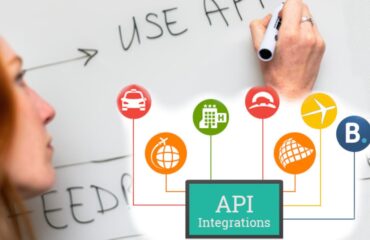For app owners, the transfer of non-personal data about their users is an additional source of income. But it’s scary to try – there is not much information on the market about monetizing mobile application data, and with the advent of the GDPR, even those who do not work with the European market began to worry about data. But for developers who properly set up the process of monetizing user data, income per user has long ceased to be a myth.
We have prepared some practical tips for those who want to implement the monetization of anonymized user data in their application, avoiding errors. Properly chosen SDK monetization will help with it.
Prepare a good user base
Before considering the option of monetizing user data, carefully study the audience of the application. It is essential for finding the best way of desktop software monetization.
Companies that do preliminary market analysis based on such data recognize that the final product’s success directly depends on the reliability and relevance of the information. The bets are on the consistency and clarity of the data. Relevance is a key indicator of the cost of data in the formation of a proposal for consumers. Accordingly, the data in the application must be up-to-date and reliable.
Analyze the MAU/DAU of your application: if you have less than 10,000 DAU so far, there is little chance of seeing tangible results from user data monetization. Profits start at 50,000 DAU, so if there are fewer users, work on the quantity and quality of the app audience to make it easier to monetize them.

Collect non-personal data
Developers realize that they are operating with a vast amount of underutilized data that is valuable not only for internal optimization but also for third-party companies. The mechanics of transferring impersonal user data is simple: the developer installs the SDK of the data collection company, where he prescribes what user data he transfers, receives the user’s consent to process non-personal data, and starts making money on each user.
Unlike in the US, European rules on user data have become even stricter with the introduction of the General Data Protection Regulation (GDPR). It severely limits the ability of European companies to generate revenue from user data. This does not prohibit the use of personal data for targeted advertising, but for its use, it is required that the user agrees to transfer data for these purposes.
What data is personal?
It is important to note that there are some special types of personal data, such as information about racial or ethnic origin, political opinions, religious or philosophical beliefs, income, etc. This group also includes biometric data, any data on health status, and sexual orientation (Art.9 GDPR). It is sinful to collect them even outside the GDPR.
Non-personalized data that third parties collect about users include:
- Device type.
- Device version.
- Screen size.
- Mobile operator.
- Connection type.
- A serial number of the central processor.
- RAM, ROM.
- Country.
- IP.
The third party never collects more data than you are willing to provide. You yourself once configure the types of data about each user, which will be transmitted to companies in the future.
Obtain explicit user consent
Developers know for sure that getting users into an app and keeping them engaged is not easy – and risking it to cash in on user data without their consent is shortsighted. Therefore, the data collection must be perfectly aligned with the UX. The main rule in monetizing user data is to obtain explicit consent from the user to provide anonymized data.
This process can be simplified using sign-in through social networks since users already know that they provide some data in this way and are calm about this process. This is not optimal but quite a working option.
If you decide to make money from anonymized user data, you will need to install one SDK. The entire operation of installing the SDK for software monetization and connecting to third parties takes place on the backend and does not affect advertising or other SDKs or the user’s path in any way.

Choose a monetization company
Finding a reliable company that can transfer user data is another challenge. Typically, research centers and advertisers collect such data on a one-time basis, and there is a risk for the developer to monetize not 100% of users and not on an ongoing basis.









